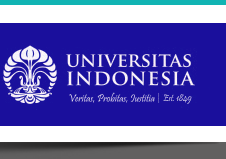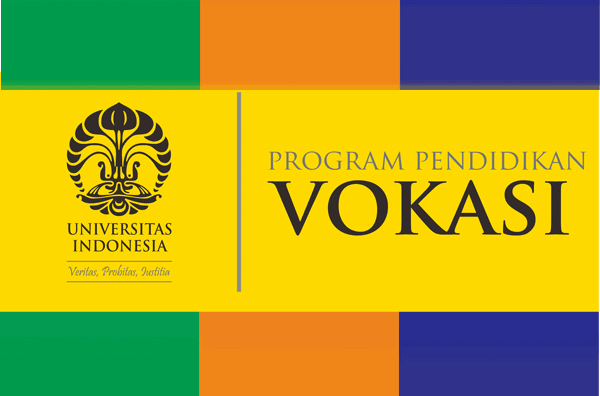Jurnal Fisioterapi Terapan Indonesia
Abstract
Background: Bell’s Palsy is defined as paralysis of one side of the facial nerve, with an unknown cause. Several other conditions can also cause facial paralysis, such as brain tumors, stroke, myasthenia gravis, and Lyme disease. However, if no specific cause can be identified, this condition is known as Bell’s Palsy, which is caused by swelling and pressure on the nerve at the stylomastoid foramen, leading to nerve compression or damage. Often, the affected side’s eye cannot be closed. Physiotherapy management plays a vital role in the rehabilitation process for Bell’s Palsy patients to reduce symptoms, accelerate recovery, and restore facial muscle function. This study aims to determine the effectiveness of infrared modality, mirror exercises, and faradic current in patients with Bell’s Palsy. Objectives: To examine physiotherapy management using Infrared, Mirror Exercise, and Faradic Current in cases of Bell’s Palsy. Methods: The method involved patients with left-sided Bell’s Palsy. Assessments were conducted using Manual Muscle Testing (MMT) to evaluate facial muscle strength and the Ugok Fish test to assess the functional ability of facial muscles. The therapy was administered four times with a combination of infrared, mirror exercises, and faradic current. Results: Evaluation of facial muscle strength on the left side using MMT showed that the frontalis muscle score increased from 1 at T1 to 3 at T4, and the orbicularis oris muscle score increased from 1 at T1 to 3 at T4 on the affected side. Additionally, functional ability measured by the Ugok Fish test improved from 50% initially to 60%. Conclusion: The administration of infrared, mirror exercises, and faradic current therapy resulted in increased muscle strength and improved functional activity in a case of Bell’s Palsy.
References
1. Kahar, Novhirtamely, and Eka Budi Lestari. 2018. Penerapan Forward Chaining Dan Deterministic Finite Automata Pada Sistem Pakar Diagnosa Awal Penyakit Saraf. Jurnal Sains dan Sistem Informasi 1(2): 1–6. Available from: https://online-journal.unja.ac.id/JUSS/article/view/5941/9206
2. Baugh, R. F., Basura, G. J., Ishii, L. E., Schwartz, S. R., Drumheller, C. M., Burkard, R. F.,. (2022). Clinical practice guideline: Bell’s palsy. Otolaryngology–Head and Neck Surgery, 146(3_suppl), S1–S27. DOI: https://doi.org/10.1177/01945998211000815 Available from: https://www.ncbi.nlm.nih.gov/books/NBK482290/
3. Rifaat, W. O. N. F., Munjia Assagaf, Suciati Dapolomi, Zulfikri Khalil Novriansyah, & A. Rompegading. (2024). Prevalensi pasien bell’s palsy di klinik cerebellum makassar. Fakumi Medical Journal: Jurnal Mahasiswa Kedokteran, 4(2), 165–171. DOI: https://doi.org/10.33096/fmj.v4i2.423
4. Putri, Zanty Rakhmania. (2022) Bell’s palsy: Diagnosis dan Tata laksana. cermin dunia kedokteran, 2022, 49.8: 431-434. Available from: https://cdkjournal.com/index.php/cdk/article/view/269 DOI: 10.55175/cdk.v49i8.269
5. Eviston, T. J., Croxson, G. R., Kennedy, P. G., Hadlock, T., & Krishnan, A. V. (2015). Bell’s palsy: aetiology, clinical features and multidisciplinary care. Journal of neurology, neurosurgery & psychiatry, 86(12), 1356–1361. DOI: https://doi.org/10.1136/jnnp-2014-309563 Available from: https://pubmed.ncbi.nlm.nih.gov/25857657/
6. Medscape. (2023). Bell palsy: Practice essentials, background, anatomy. Medscape Reference. Retrieved May 23, 2025, available from: https://emedicine.medscape.com/article/1146903-overview
7. Tiemstra, J. D., & Khatkhate, N. (2007). Bell’s palsy: Diagnosis and management. American Family Physician, 76(7), 997–1002. Available from: https://www.aafp.org/pubs/afp/issues/2007/1001/p997.html
8. Tohid, H., Faizan, M., & Faizan, U. (2015). Bell’s palsy: A review. Cureus, 7(8), e299. DOI: https://doi.org/10.7759/cureus.299 Available from: https://www.ncbi.nlm.nih.gov/pmc/articles/PMC4606329/
9. Peraturan Menteri Kesehatan Republik Indonesia Nomor 65 Tahun 2015 tentang Standar Pelayanan Fisioterapi. Berita Negara Republik Indonesia Tahun 2015 Nomor 1662. Available from: https://peraturan.bpk.go.id/Details/116529/permenkes-no-65-tahun-2015
10. Afandi, G. E., & Rahman, I. (2021). Penatalaksanaan fisioterapi pada kasus bell’s palsy sinistra dengan modalitas infra red dan massage di RSUD Cikalong Wetan Kabupaten Bandung Barat. Exellent Midwifery Journal, 4(2), 44–49. DOI: https://doi.org/10.55541/emj.v4i2.171
11. Muhammad, A. R., & Prihati, E. (2022). Efektivitas pemberian infrared, electrical stimulation, facial exsercise pada kasus bell’s palsy. Jurnal Kesehatan Dan Fisioterapi(Jurnal KeFis), Volume2, 36–43. Available from: https://ejournal.insightpower.org/index.php/KeFis/article/view/121
12. Astuti, S. W., & Rahman, I. (2021). Penatalaksanaan fisioterapi pada bell’s palsy dengan modalitas infrared, electrical stimulation dan mirror exercise di RS Pindad Kota Bandung. Jurnal Stikes Sitihajar, 3, 132–137. Available from: https://www.neliti.com/publications/423869/penatalaksanaan-fisioterapi-pada-kasus-bells-palsy-sinistra-dengan-modalitas-inf
13. Abdul Qudus, Aryani ND, Nurjanah A. Penatalaksanaan fisioterapi pada pasien kasus Bell’s Palsy Sinistra dengan modalitas Infra Red Radiation dan Mirror Exercise di RSUD Cibabat Kota Cimahi. INFOKES - Politeknik Piksi Ganesha. 2020;4(1):1–8. Available from: https://www.piksiganesha.ac.id/index.php/INFOKES/article/download/293/197
14. Azhari, M. F. M., Rahayu, U. B., & Nasuka, M. (2023). Penatalaksanaan Fisioterapi pada kasus bell’s palsy sinistra dengan modalitas inframerah, electrical stimulation dan mime exercise. Journal of Innovation Research and Knowledge, 3, 83–90. Available from: https://bajangjournal.com/index.php/JIRK/article/view/6044
15. Ahmad, N. F. H., Darajatun, A. M., & Rosadi, R. (2024). Penatalaksaan fisioterapi pada pasien kasus bell's palsy dextra di RSUD H aji, Surabaya. Seroja Husada: Jurnal Kesehatan Masyarakat, 1(2), 109-115. Available from: https://jurnal.kolibi.org/index.php/husada/article/view/1411
16. Latuamury, R., Yuliati, A., Firmansyah, L. A., Malang, U. M., Kunci, K., Bell’s Palsy, Mirorr, L. (2023). Pengaruh electrical stimulation dan mirror theraphy exercise pada kasus bells palsy. Jurnal Ilmiah Multi Disiplin Indonesia, 2(9), 1882–1889. Available from: https://journal.ikopin.ac.id/index.php/humantech/article/view/3386
17. Safitri, P. A., & Rakasiswi, M. A. (2022). Penatalaksanaan fisioterapi pada kondisi bell’s palsy sinistra dengan modalitas infrared, electrical stimulation arus faradik dan terapi latihan di RSUD Bendan Kota Pekalongan. Jurnal Rumpun Ilmu Kesehatan, 2(1), 199–206. Available from: https://ejurnal.politeknikpratama.ac.id/index.php/JRIK%0Ahttps://ejurnal.politeknikpratama.ac.id/index.php
18. Dermin, & Rosella Komalasari, D. (2022). Physiotherapy management in left bell’s palsy: A Report Study, 179–185. Available from: https://repository.urecol.org/index.php/proceeding/article/view/2309
19. Cateb, K. C. F., Thebit, M. M., Fonseca, A. H. A., Navarro, R. S., & Pavani, C. (2025). Photobiomodulation Therapy in Bell´s Palsy: A Case Report. Journal of Advances in Medicine and Medical Research, 37(2), 196–204. Available from: https://www.journaljammr.com/index.php/JAMMR/article/view/5733. DOI: 10.9734/jammr/2025/v37i25733
20. Wulandari, T. M., & Widodo, A. (2022). Home Rehabilitation Program in the Case of Bell's Palsy at Dr. Efram Harsana Hospital, Iswahjudi-Case Report. Academic Physiotherapy Conference Proceeding, 2021. Available from: https://proceedings.ums.ac.id/index.php/apc/article/view/122
21. Amalia, H., Widodo, A., & Fauzan, M. (2024). Penatalaksanaan Fisioterapi Pada Kasus Bell’s Palsy. Jurnal Anestesi, 2(2), 42–48. DOI: 10.59680/anestesi.v2i2.1021 Available from: https://jurnal.stikeskesdam4dip.ac.id/index.php/Anestesi/article/view/1021
22. Aryanti, W., & Sudaryanto, T. W. (2022). Physiotherapy Management in Bell's Palsy Case with Electrical Stimulation and Massage Modalities: A Case Report. Academic Physiotherapy Conference Proceeding, 2021. Available from: https://proceedings.ums.ac.id/index.php/apc/article/view/181
23. Deshmukh, N. S., Kannao, V. V., Phansopkar, P., & Wadhokar, O. C. (2021). Impact of Physical Therapy on a Patient with Bell’s Palsy: A Case Report. Journal of Pharmaceutical Research International, 33(33B), 97–102. Available from: https://journaljpri.com/index.php/JPRI/article/view/2622?__cf_chl_tk=L5E5BO0QVWNamImGKsc..sw9AKdn8J0jBBmk4hfXYvY-1747974086-1.0.1.1-P1rmEKV9cXLOpfJQoGaBYfpV7suYqY_puV78turG6Q0 DOI: 10.9734/jpri/2021/v33i33B31800
24. Munawwarah, W., Kurniati, N., & Dwi Agustina. (2021). Efektivitas mirror therapy exercise. Indonesian Journal of Physiotherapy, 1(2), 55–68. Available from: https://ejournal.upnvj.ac.id/IJP/article/view/3322
25. Hanifah, T. A., & Tenriwulan, A. F. (2021). Manfaat Pemberian Mirror Exercise dan Facial Massage untuk Otot dan Fungsional Wajah pada Bell’s Palsy. UMSIDA Preprints Server. DOI: 10.21070/ups.5601 Available from: https://archive.umsida.ac.id/index.php/archive/preprint/view/5601/version/5594
26. Mughal, S., Shoukat, F., Munawar, A., & Tahir, R. (2021). Effectiveness of Facial Neuromuscular Retraining with and without Mirror Visual Feedback in Patients with Bell’s Palsy. Annals of King Edward Medical University, 27(Special Issue), 407–412. DOI: 10.21649/akemu.v27iSpecial%20Issue%20(Jul-Sep).4655 Available from: https://www.annalskemu.org/journal/index.php/annals/article/view/4655
27. Selviyani, J., & Kuswardani. (2024). Studi Kasus: Penatalaksanaan fisioterapi pada bell’s palsy dengan electrical stimulation dan massage. Indonesian Journal Of Health Research Innovation(IJHRI), 1(2), 72–76. Available from: https://journal.ymci.my.id/index.php/ijhri/index
28. Rahman, I., & Agustini, A. (2023). Penatalaksanaan fisioterapi pada kasus Bell’s Palsy dekstra dengan modalitas electrical stimulation (faradik), massage dan terapi latihan. INFOKES (Informasi Kesehatan), 6(2), 16–33. DOI: https://doi.org/10.56689/infokes.v6i2.920
29. Kaushik, H., Choudhary, A., & Sethi, P. (2024). Effectiveness and optimal dosage of physiotherapy interventions for Bell palsy: a case study. Bulletin of Faculty of Physical Therapy, 29(1), Article 55. Available from: https://bfpt.springeropen.com/articles/10.1186/s43161-024-00223-5 DOI: https://doi.org/10.1186/s43161-024-00223-5
Bahasa Abstract
Latar belakang: Bell’s Palsy didefinisikan sebagai kelumpuhan saraf fasialis satu sisi, dengan penyebabnya tidak diketahui. Beberapa keadaan lain juga dapat menyebabkan kelumpuhan fasialis, misalnya tumor otak, stroke, myasthenia gravis, dan penyakit Lyme. Namun, jika tidak ada penyebab khusus yang dapat diidentifikasi, kondisi ini dikenal sebagai bell’s palsy yang disebabkan akibat pembengkakan dan tekanan saraf pada foramen stylomastoid dan menyebabkan penghambatan atau kerusakan saraf. Seringkali mata di sisi yang terkena tidak dapat ditutup. Penatalaksanaan fisioterapi berperan penting dalam proses rehabilitasi pasien bell’s palsy untuk mengurangi gejala, mempercepat pemulihan, serta mengembalikan fungsi otot wajah. Penelitian ini bertujuan untuk mengetahui efektivitas pemberian modalitas infrared, mirror exercise dan faradic current pada pasien bell’s palsy. Tujuan: Untuk mengetahui penatalaksanaan fisioterapi pada kasus bell’s palsy dengan Infrared, Mirror Exercise, dan Faradic current. Metode: Metode dengan studi kasus (case study) yang digunakan pada pasien bell’s palsy sinistra. Pengukuran dengan Manual Muscle Testing (MMT) untuk mengetahui kekuatan otot wajah dan pengukuran dengan ugo fisch untuk mengetahui kemampuan fungsional otot wajah. Terapi diberikan sebanyak empat kali dengan kombinasi infrared, mirror exercise, dan faradic current. Hasil: Hasil evaluasi kekuatan otot wajah sisi kiri dengan uji Manual Muscle Testing (MMT) otot wajah pada m. frontalis yang pada T1 bernilai 1 di T4 menjadi bernilai 3, dan m. orbicularis oris di T1 bernilai 1 di T4 menjadi bernilai 3 ada sisi sinistra. Selanjutnya pengukuran kemampuan fungsional dengan uji ugo fisch dengan poin awal 50% menjadi 60%. Kesimpulan: Pemberian terapi infrared, mirror exercise, dan faradic current yang telah dilakukan memberikan hasil terdapat peningkatan kekuatan otot dan peningkatan aktivitas kemampuan fungsional pada kasus bell’s palsy.
Recommended Citation
Rachmawati, Dhyan; -, Sugiono; Nugroho, Fendy; and -, Noerdjanah
(2025)
"The Benefits of Infrared Therapy, Mirror Exercise, and Faradic Current in a Patient with Bell’s Palsy: Case Study,"
Jurnal Fisioterapi Terapan Indonesia: Vol. 4:
Iss.
1, Article 1.
DOI: 10.7454/jfti.v4i1.1106
Available at:
https://scholarhub.ui.ac.id/jfti/vol4/iss1/1
Included in
Neurology Commons, Other Rehabilitation and Therapy Commons, Physical Therapy Commons, Physiotherapy Commons








